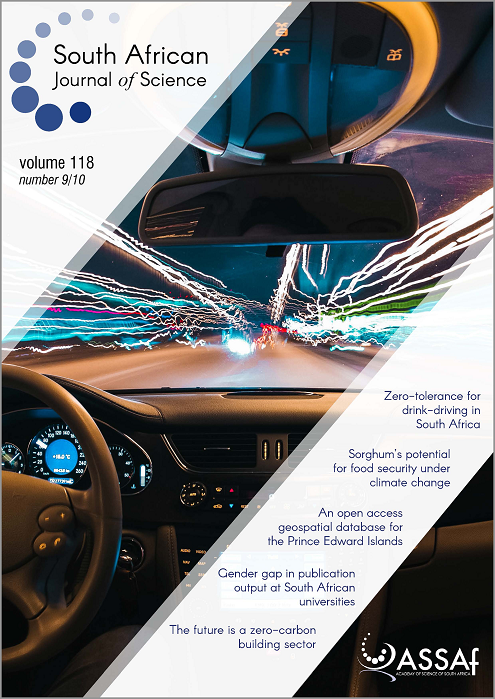Zero-tolerance drink-driving and road safety in South Africa: What are the options?
DOI:
https://doi.org/10.17159/sajs.2022/11480Keywords:
zero-tolerance, drink-driving, road safety, alcohol, South AfricaAbstract
Alcohol is a major contributing factor to the burden of road traffic crashes and injuries in South Africa. There has been an increase in political interest and engagement on the issue of drink-driving in recent months following government restrictions on the sale and public consumption of alcohol during the COVID-19 lockdowns along with proposed zero-tolerance drink-driving legislation. In this paper, we critically examine global research and experiences with the adoption of zero-tolerance approaches to drink-driving along with key South African contextual considerations to provide evidence-based and contextually relevant recommendations for advancing zero-tolerance drink-driving legislation in the country. There is significant evidence to support the adoption of zero-tolerance legislation but at a blood alcohol concentration (BAC) threshold limit for the general driving population set at 0.02 g/100 mL (rather than the zero-BAC limit proposed through the Road Traffic Amendment Bill) to allow for variance in testing. Recommendations centre on the proposed legislation incorporating a gradualist approach and its location within a broader zero-tolerance approach that includes other complementary interventions to enable implementation.
Significance:
- The recommended blood alcohol level of 0.02 g/100 mL is lower than the best practice limit recommended by the World Health Organization of 0.05 g/100 mL, following consideration of the road safety and general alcohol consumption challenges in South Africa and evidence of success from other similar country contexts.
- Broad principles and recommendations are presented to support the sustainable adoption of zerotolerance drink-driving legislation in the country.
Published
Issue
Section
License

All articles are published under a Creative Commons Attribution 4.0 International Licence
Copyright is retained by the authors. Readers are welcome to reproduce, share and adapt the content without permission provided the source is attributed.
Disclaimer: The publisher and editors accept no responsibility for statements made by the authors
How to Cite
- Abstract 1369
- PDF 1098
- EPUB 185
- XML 185












.png)